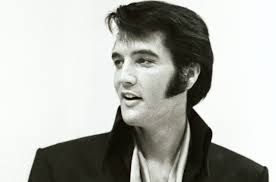
The world went into mourning on August 16, 1977, when the King of Rock n Roll died at the age of 42. Forty years later, we look at the events surrounding his untimely death and how his legacy lives on! 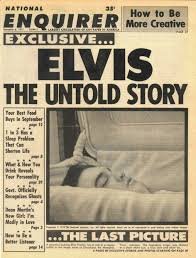
Many a celebrity is subject to a reversal of fortune with an untimely death. All that was once good about the person became bad. Though his cause of death was claimed to be heart attack, later toxicology reports identified high levels of several pharmaceutical drugs in his system. Many doubted it. After all, President Richard Nixon had met with Elvis and given him a badge from the bureau of Narcotics and Dangerous Drugs. How the cause of death changed from heart attack to prescription drug poisoning typifies the pattern of the celebrity fall from grace.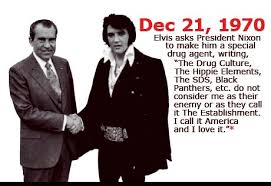
It was mid-August, 1977. Elvis Presley was at his Graceland Mansion in Memphis, Tennessee, resting between concert appearances. Sometime near 2.30pm, his girlfriend, Ginger Alden, found him lying face-down on the floor of his spacious bathroom. At 2.33pm, a call came into Memphis Fire station No.29 indicating that someone at 3754 Elvis Presley Boulevard was having difficulty breathing . Ambulance Unit No.6 sped out of the station and headed south. While not on a routine trip, local ambulances had made numerous visits to Graceland over the years to take care of the fainting fans or pedestrians hit by cars along the crowded sidewalks in front of the mansion. From time to time, the mansion owner was also sped away in an ambulance to receive emergency medical treatment.
Within a few minutes, the ambulance neared Graceland. The vehicle made a hard left through the open iron gates and up to the curved driveway to the white columned portico. One of the Presley bodyguard allowed the two medics to enter the mansion. With equipment in hand, they rushed up the stairs to the bathroom where they encountered nearly a dozen people huddled over a man in his pajamas, lying prostrate on his back. The medics quickly moved in. Initially, they did not recognise the victim, but they noticed the thick graying sideburns and the large medallion around the neck and realised that it was Elvis Presley. His skin was dark blue and cold to touch. Checking for vital signs, the medics detected no pulse and no response to light from his pupils. They quickly prepped him for transport.
It took several men to lift Presley onto the stretcher. He was obese, almost bloated. The unbalanced distribution of weight made navigation difficult around corners and down the stairs. As the medics loaded Presley into the ambulance, a stocky man with white hair, leapt into the back just as the doors closed. Dr. George Nichopoulos, his doctor, affectionately known as Dr. Nick, ordered the driver to take Elvis to Baptist Memorial Hospital, 21 minutes from Graceland. It was not made clear at that time why he say Methodist South Hospital, which was only 5 minutes away. But Dr. Nick knew the staff at Baptist Hospital was discrete.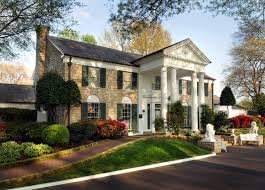
At the hospital, emergency personnel made valiant efforts to revive Presley but without success. He was pronounced death at 3.30pm.
It was a made-believe story that he died of heart failure. For a time, most people accepted this findings. But the toxicology report that came out weeks later revealed high levels of pharmaceutical painkillers such as Dilaudid, Quaalude, Demerol, and codeine in his body. The Tennessee Board of Health initiated proceedings against Dr. Nick.
During the hearings, evidence was presented that Dr. Nichopoulos had written prescriptions for over 8,000 doses of medication since 1975 and that pattern has been escalating since then.During the hearings, Dr. Nichopoulos admitted to writing the prescriptions. In his defense, he claimed that Elvis was so addicted to pain killers that he prescribed the medications to keep Elvis away from dangerous and illegal street drugs, trying to control his addiction. The jury agreed with the doctor`s rationale and absolved him of negligence in causing Presley's death. In 1980. Dr. Nick was indicted again for over-prescribing drugs to Presley and singer Jerry Lee Lewis, but was acquitted.However, his questionable medical practice caught up with him in 1995, the Tennessee Board of Medical Examiners permanently suspended his medical license for over-prescribing drugs for his patients.
On August 17, 1977, the doors of Graceland were opened for viewing of ''The King's'' body and his instantly passing from music legend to cultural icon. Crowds had gathered early that day and quickly grew to 100,000. The mourners ranged from pre-teens to middle-aged and older men and women. Many expressed open sorrow over his death. Others were more upbeat, almost festive, and eager to be a part of the cultural history. Due to extreme temperatures that day, the showing was cut-short for fear that heat and humidity would disfigure Elvis' body.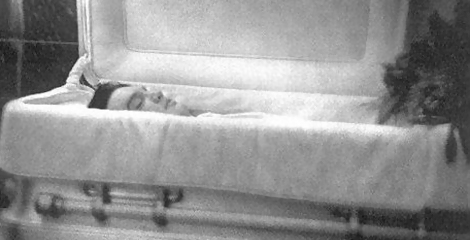
On August 18, 1977, a funeral procession of 17 white cadillacs and a hearse carrying the body of the ''King of Rock n Roll'' slowly made its way from Graceland to Forest Hill Cemetery. Under heavy guard, a simple ceremony was conducted. Elvis was laid to rest in a mausoleum alongside his mother, Gladys. The King of Rock n Roll was dead and there was no other king to take his place.
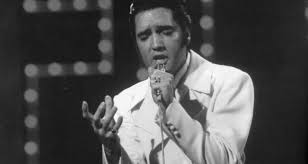
Nice post and very good writing ! Thanks for sharing ! Upvoted from @chanthasam
Downvoting a post can decrease pending rewards and make it less visible. Common reasons:
Submit
Hi! I am a robot. I just upvoted you! I found similar content that readers might be interested in:
https://www.biography.com/news/elvis-presley-death-40-years-later
Downvoting a post can decrease pending rewards and make it less visible. Common reasons:
Submit